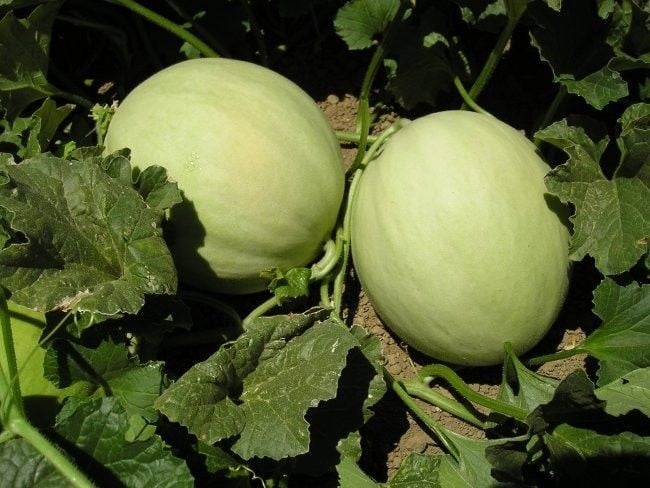How To Grow Melon In A Greenhouse

Many of us have tried growing tomatoes, pepper or herbs, this summer why not try growing something a bit different. In our How to grow Melon in a greenhouse blog we look at a more unusual crop. Melons are a staple for fruit salads and are perfect for growing in greenhouses. They may require slightly more effort than your standard tomato but they are well worth the input. We’ve created a useful guide of how to grow melon in a greenhouse to get you started and excited for growing this beautiful fruit. We will take you through sowing the melons seeds, growing the fruit themselves and when to harvest them so you can impress your friends with your horticultural skills.
How do you sow melon seeds?
When growing any fruit or veg the danger of frost can pose a serious threat to your produce. Therefore, growing melons in a greenhouse is much more forgiving than growing them outside. You can start to sow your melon seeds from mid-April until the end of May. To start with, soak the seeds in lukewarm water for 24 hours to encourage germination and to penetrate the seed. Then like most fruit or vegetables you will need to sow the seeds around 1 inch deep directly into small pots around 3-4 inches in diameter. Water the seeds lightly whenever the soil looks dry being careful not to over-water them and leave the seeds to germinate.
What Melon varieties to choose
Here are some melon varieties well-suited for UK greenhouse conditions:
- Cantaloupe (Muskmelon): Varieties like ‘Halona’ or ‘Sweetheart’ are ideal for greenhouse cultivation. They produce small to medium-sized, sweet, and aromatic melons with orange flesh. These varieties are known for their shorter growing periods, making them suitable for the UK’s climate.
- Honeydew: ‘Honey Bun’ and ‘Green Machine’ are honeydew melon varieties that can flourish in a UK greenhouse. They yield sweet, pale green melons with a unique flavour. Greenhouse-grown honeydews benefit from the controlled environment, which helps achieve the desired sweetness and ripeness.
- Charentais: Charentais melons, such as ‘Savor’ or ‘Cavaillon,’ are small, fragrant, and intensely flavoured. They are well-suited for greenhouse cultivation due to their compact growth habit and ability to ripen in a shorter period.
- Asian Melon (Oriental Melon): Varieties like ‘Korean Yellow’ or ‘Ogen’ are smaller-sized melons with a crisp, sweet taste. They can be successfully grown in a greenhouse and offer a unique flavour for your palate.

How do you grow melon seeds?
You’ll know it is time to move the seedlings from their smaller pots and into grow bags when they have two true leaves. Your seedling will grow best with a greenhouse temperature of 18°C (59°F) minimum and preferably no higher than 23°C (73°F). The sliding doors on the Access Greenhouse makes controlling the ventilation easy. Transfer your seedlings from their pots into their grow bags being conscious of the soil you are bedding them. The most important factor in the yield when growing melons is the soil temperature. If the average soil temperature is 21°C or higher then melon yields can be expected to around 20% higher than a cooler temperature soil – put the grow bag inside the greenhouse into the greenhouse before planting up to allow the compost temperature to warm up. Ensure your soil has a pH of around 6.0-6.5 and is mixed with rich organic matter, compost or manure will work the best. Proper drainage is also essential as with the majority of fruit and vegetables.
In preparation for the melons to grow, create some support for them to grow around.
You can use a single line of string tied to the inside of your greenhouse or have wooden support sticking out of the ground next to the melon. As the melon begins to grow tie your strongest shoot to the support you have set up. Similar to growing tomatoes, pinch out the side shots which will be growing from the main stem. This will encourage the plant to grow upwards. Then when the stem has reached the top of your support, pinch out the plant’s leading shoot. By doing this you will be encouraging the plant to focus on the production of the melons themselves rather than to grow taller. Keep the number of melon buds per vine low so that the plant’s energy will be put into fewer melons. This means each melon that you grow will be larger, compared to if you let 2-3 melons grow per vine.

How you water your melons will have a defining impact on how successful you are. You want the water to reach deep into the roots but not to saturate them or drown them. Too much water can cause the melons to split so try to keep them moist but not wet. Set up an effective watering system to ensure water reaches the roots– an Access drip watering system is ideal. If your greenhouse is on soil, try submerging a plant pot next to the fruit or installing a pipe so you can pour water directly into the soil surrounding the roots. Feeding your plant is easy, liquid tomato fertiliser is ideal and should be used once a week when the fruit has started to appear.
Pollination of the melon plant is key, without it the fruit will not grow. With the sliding doors on an Access greenhouse, bees will easily be able to enter your greenhouse, and pollenate, however you can pollinate your plant yourself. Once the flowers appear take a small instrument and brush each flower to encourage pollination. A few days later, remove the male flowers, you can distinguish them from female because the female flowers will have a miniature melon seen behind the flower itself.
As the melons grow larger offer them more support to grow against, string nets are popular as are larger wooden stakes. Tend to your fruit by carefully removing any leaves that are covering it from the light, this will encourage the fruit to ripen faster and produce a sweeter melon. By elevating the melons off the ground using a wooden plank you will encourage the melons to grow into a beautiful round shape. If the temperature in your greenhouse rises higher than you would like you can place a bucket of water to keep it humid rather than dry, or damp down for a few seconds in the early morning with the mist watering system.
When should you harvest your melon?
Every melon has a different maturation time and will show it’s ready to be harvested differently. Each melon will ripen individually so keep a close eye on all of them. Knowing when a melon is ripe can be an art form, but you can pick up some general tips quite easily. Look for a ceasing in growth and tap the melon gently to see if you can hear a dull thud. If you are really unsure and have multiple melons you can test one by cutting it open. Separate the vine from the melon before it happens naturally as it will be rotten by the time it comes loose. One plant may produce multiple melons ripening over a period of 3 weeks. The beauty of growing your own melons is that you can harvest them later than commercial melons. This means that your melons will have longer to ripen, produce more natural sugar and therefore be sweeter than ones you buy from shops. Growing melons can be a challenge compared to other fruits but the rewards are worth the extra effort and very distinguishable from shop bought melons.
Conclusions
In our How To Grow Melon In A Greenhouse blog we have looked at tops for growing, varieties to choose and information in harvesting your melons. For more advice in greenhouse gorowng, check out our blogs on how to grow courgettes and how to grow peppers in a greenhouse.
